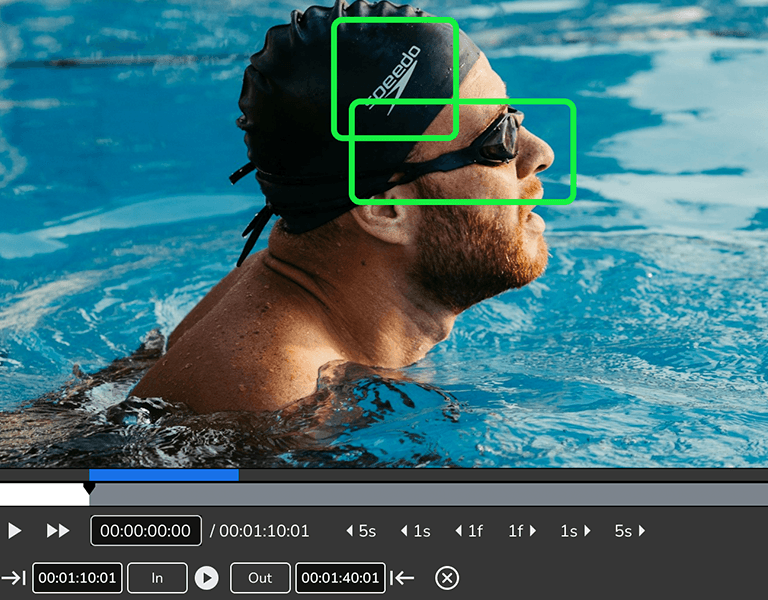In our previous post on metadata tagging, we explored how making unstructured assets searchable and discoverable is essential to maximizing their value. Yet, when enterprises talk about harnessing the value of their data, the conversation often jumps straight to analytics, dashboards, or AI-driven insights. But before any of that can happen, one foundational step determines whether those downstream efforts succeed or stall—data ingestion.
Simply put, data ingestion is the process of collecting data from multiple, often fragmented, sources and moving, cleaning, transforming, and normalizing it into a centralized data processing workflow. Without it, an enterprise’s data ecosystem becomes disjointed, leaving knowledge locked away in silos, disconnected systems, and archives that no one can easily access.
The many faces of data sources
Enterprises today draw from a wide range of data sources, each with unique ingestion requirements. These may include:
- Archives and historical repositories that hold years or decades of business-critical records.
- Partner feeds and third-party datasets that expand internal knowledge but arrive in varying formats.
- IoT devices and sensors that generate constant streams of telemetry data.
- Media libraries and creative assets that often live in sprawling, unstructured formats like video or audio.
- Cloud repositories and SaaS applications where modern workflows increasingly originate.
Each source contributes value, but also adds complexity. Ingestion is what helps ensure they can coexist in a single, unified enterprise data ecosystem.
However, because these sources vary so widely, the method of bringing them into a centralized system can’t be one-size-fits-all. The ingestion requirements for a structured database look very different from those of a massive media archive or a partner feed delivered in inconsistent formats. This is where the distinction between structured and unstructured ingestion becomes critical.
Structured vs. unstructured ingestion
Structured data (like relational databases or spreadsheets) has long been easier to ingest thanks to a well-defined schema. But the reality is that the majority of enterprise information today is unstructured, contained in the form of text, images, video, audio, PDFs, and more.
Unstructured ingestion requires advanced techniques like automated schema detection, metadata tagging, and content classification, often powered by AI/ML. Without intelligent tooling, ingestion quickly becomes a bottleneck that keeps critical content hidden from search, discovery, and downstream analytics.
Standardization is the missing piece that often determines whether AI-assisted ingestion scales cleanly or devolves into ad-hoc parsing. Veritone’s AI Object Notation (AION) offers such an approach: a JSON-based schema designed to represent the outputs of cognitive engines – speech transcripts, object detections, sentiment analyses, and similar metadata – in a consistent, machine-readable structure. By wrapping heterogeneous outputs of different AI models and categories in a predictable schema, AION reduces the translation overhead between ingestion pipelines and downstream storage or analytics systems.
The idea behind AION reflects a growing trend in data engineering: treating AI-derived metadata as first-class, structured data. When unstructured assets like video, audio, or documents can emit standardized descriptors, they can be indexed, searched, and joined with tabular data far more easily. Ingestion stops being a guessing game and becomes an exercise in schema validation – one that scales naturally as the number and diversity of AI models grow.
As both structured and unstructured assets continue to multiply, the challenge isn’t just how to ingest them, but how to do so at scale. Enterprises dealing with thousands—or even millions—of files quickly discover that manual ingestion is unsustainable. This is where automation in bulk ingestion becomes essential.
The role of automation in bulk ingestion
Manually ingesting large data archives isn’t just inefficient, it’s virtually impossible at scale. That’s why automated data processing is now a requirement, not a luxury. Bulk ingestion workflows can:
- Extract and normalize content from thousands of files at once.
- Enrich assets with metadata and apply business rules in-flight.
- Route data intelligently across the enterprise, ensuring the right stakeholders and systems get the right content.
Automation transforms ingestion from a labor-intensive task into a scalable foundation for enterprise growth.
Yet even with automation in place, not all ingestion needs are the same. Some data must be captured and processed instantly, while other workloads are better handled in larger, scheduled intervals.
Real-time vs. batch ingestion
Different use cases demand different ingestion strategies.
- Real-time ingestion is critical for IoT monitoring, live content feeds, or time-sensitive insights where every second counts.
- Batch ingestion is often better for migrating historical archives or performing scheduled bulk updates that don’t require immediate availability.
An intelligent workflow can balance both approaches, ensuring enterprises aren’t forced into a one-size-fits-all ingestion model. Choosing between real-time and batch strategies ensures data moves at the right pace, but speed alone isn’t enough. To truly unlock value, enterprises need ingestion that can also adapt, learn, and optimize.
Why intelligent ingestion matters
What elevates ingestion from a mechanical process to a competitive advantage is intelligence. Leveraging AI/ML for data ingestion means enterprises can:
- Automatically detect schema from unfamiliar sources.
- Classify and enrich unstructured assets without human intervention.
- Route content across the data pipeline based on context, sensitivity, or business rules.
- Continuously optimize ingestion workflows as new data types emerge.
In this way, ingestion becomes more than just moving data, it becomes the first step in activating it.
From chaos to clarity
Enterprises struggling with fragmented archives, partner feeds arriving in inconsistent formats, or cloud repositories scattered across the organization often face the same pain point: valuable data exists, but no one can find or use it effectively.
By prioritizing intelligent, automated data ingestion as the foundation of their data workflows, organizations turn chaos into clarity, unlocking immediate efficiencies while setting the stage for long-term innovation.
How Veritone can help
With Veritone Data Refinery, enterprises gain a powerful platform to manage ingestion at scale. Data Refinery automates the process of collecting, normalizing, and enriching data from structured and unstructured sources, while embedding AI-powered intelligence that routes, classifies, and optimizes content across your entire enterprise data ecosystem.
Whether you’re migrating archives, processing live feeds, or building a future-ready data pipeline, Veritone Data Refinery turns ingestion from a costly challenge into a strategic advantage.
Ready to transform your data ingestion workflow? Request a demo of Veritone Data Refinery today and see how intelligent ingestion can unlock the full potential of your enterprise data.





